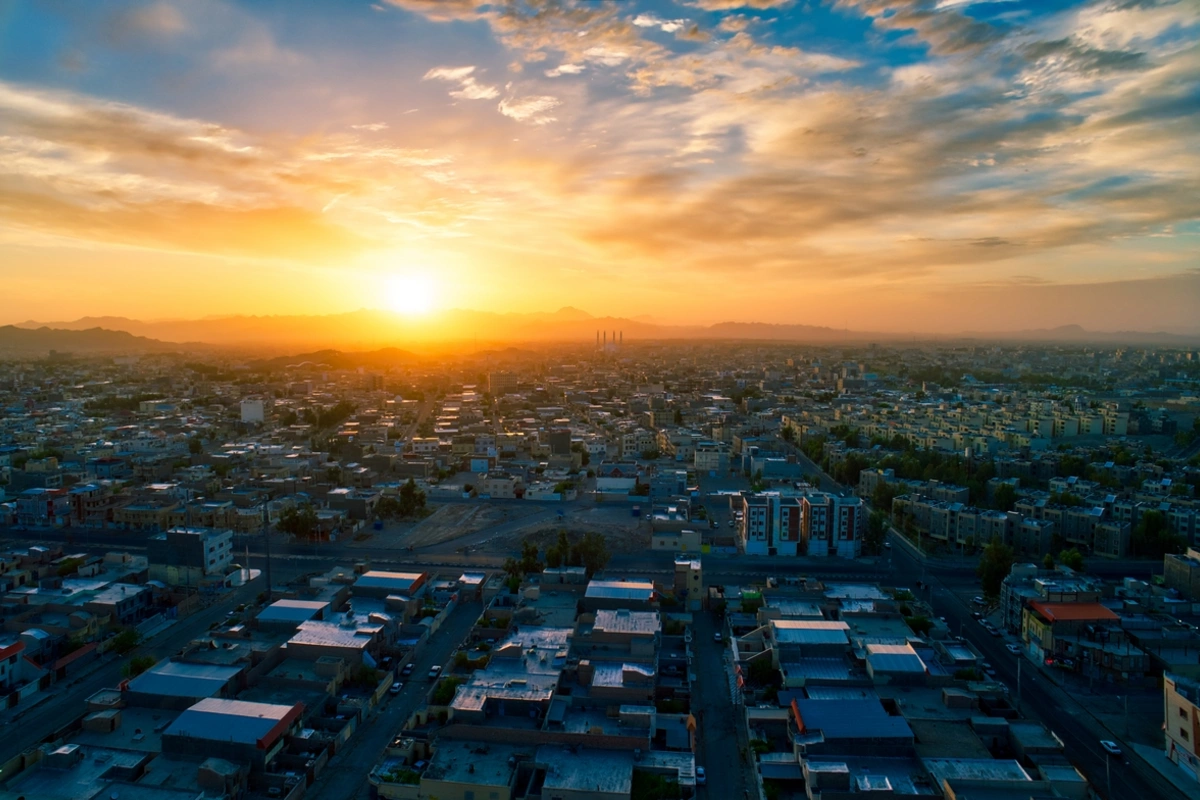
Climate change, government mismanagement, and population growth are all considered to contribute to Iran’s climate migration crisis.
Image: Aref Barahuie/Shutterstock
(RFE/RL) Record temperatures, prolonged droughts, and the drying up of rivers and lakes are displacing tens of thousands of Iranians each year, experts say.
Many of the climate migrants are farmers, laborers, and fishermen who are moving with their families from the countryside to major urban areas in Iran in search of alternative livelihoods.
Iranian officials have blamed worsening water scarcity and rising desertification on climate change. But experts say the crisis has been exacerbated by government mismanagement and rapid population growth.
While the exact number of climate migrants is unknown, Iranian media estimated that around 42,000 people in 2022 were forced to migrate due to the effects of climate change, including drought, sand and dust storms, floods, and natural disasters. The estimated figure for 2021 was 41,000. Observers say the real figures are likely much higher.
Experts say a growing number of Iranians are likely to leave rural areas as more areas of Iran -- where most of the land is arid or semiarid -- become uninhabitable every year.
"It is visible because Iran is very dry, there is little rainfall, and a significant part of the country is desert," Tehran-based ecologist Mohammadreza Fatemi told RFE/RL. "As a result, the slightest change in the climate affects the population."
Fatemi cited the drying up of the wetlands and lakes in Iran’s southeastern province of Sistan-Baluchistan as an example. The Hamun wetlands were a key source of food and livelihood for thousands of people. But as the wetlands have diminished, many locals have migrated to the cities.
"Many people lived there, [but] they all moved to [the provincial capital] Zahedan and [the city of] Zabol," said Fatemi. Now, he adds, many are moving from these cities to other provinces.
Environmentalist Mehdi Zarghami from Tabriz University recently estimated that some 10,000 families have left Zabol for other parts of Iran during the past year due to drought and sandstorms.
Fatemi estimates that around 70 percent of migration inside Iran is driven by the effects of climate change. "We’ve entered the phase of crisis. The next level could be a disaster," he said.
Some Iranian officials have warned that many parts of the Islamic republic could eventually become uninhabitable, leading to a mass exodus from the Middle Eastern country.
In July, officials warned that more than 1 million hectares of the country's territory -- roughly equivalent to the size of Qom Province or Lebanon -- is essentially becoming unlivable every year.
In 2018, then-Interior Minister Abdolreza Rahmani Fazli said that drought and water scarcity could fuel "massive migration" and eventually lead to a "disaster."
Iran is among the countries most vulnerable to climate change in the Middle East, which is warming at twice the global average.
Ahad Vazifeh of Iran's Meteorological Center said in October that average temperatures in Iran had increased by 2 degrees in the past 50 years.
But experts say that climate change only partly explains the environmental crisis that Iran is grappling with.
Tehran's failed efforts to remedy water scarcity, including dam building and water-intensive irrigation projects, have contributed to the drying up of rivers and underground water reservoirs.
Kaveh Madani, the director of the United Nations University Institute for Water, Environment, and Health, told RFE/RL's Radio Farda that Iran's "water bankruptcy" had been fueled by government mismanagement and the building of dozens of dams.
"Iran's consumption is more than its natural sources of water," he said. "Therefore, [the authorities are] using underground sources of water. [In response,] the wetlands have dried up, rivers have dried up, and now climate change has added to this equation."
"Temperatures are rising, there’s more dust, soil erosion will increase, and desertification will increase," predicted Madani, a former deputy head of Iran's Environment Department.
The government's mismanagement of Iran's scant water resources has triggered angry protests in recent years, especially in drought-stricken areas.
Water scarcity has also led to conflict. Iran and Afghanistan engaged in deadly cross-border clashes in May after Tehran demanded that its neighbor release more upstream water to feed Iran's endangered southeastern wetlands.
Some experts say rapid population growth in Iran has also contributed to the environmental crisis, although growth has slowed in recent years.
Iran's population has more than doubled since the 1979 Islamic Revolution, rising from about 35 million to almost 88 million, with about 70 percent of the population residing in cities.
Climate migration has put a growing strain on infrastructure and created socioeconomic problems in Iranian cities, including rising poverty, homelessness, and overcrowding, experts say.
Researcher Mohammad Reza Mahbubfar told the Rokna news site in February 2021 that Tehran was a major destination for many of the country's climate migrants. "Contrary to what officials say -- that Tehran has a population of 15 million -- the [real] figure has reached 30 million," he said.
Mahbubfar added that "unbalanced development" had "resulted in Tehran being drowned in social [problems]."
The influx has led some wealthier Tehran residents to move to the country's northern provinces, a largely fertile region that buttresses the Caspian Sea.
"My mother, who has a heart problem, now spends most of her time in our villa in Nowshahr," a Tehran resident told Radio Farda, referring to the provincial capital of Mazandaran Province.
"My husband and I are hoping to move there once we retire to escape Tehran's bad weather and pollution," the resident said.
Reza Aflatouni, the head of Iran's Land Affairs Organization, said in August that about 800,000 people had migrated to Mazandaran in the past two years.
Local officials have warned that Mazandaran is struggling to absorb the large influx of people.
Share on social media